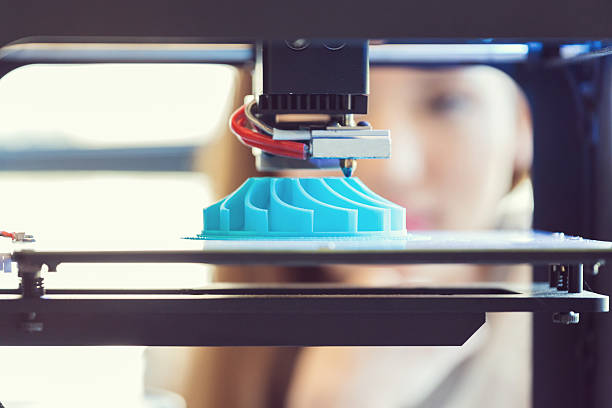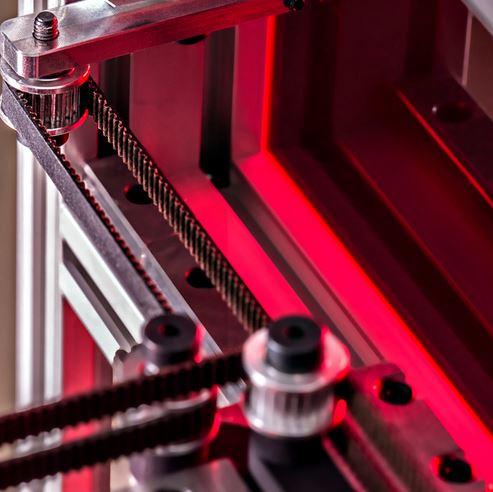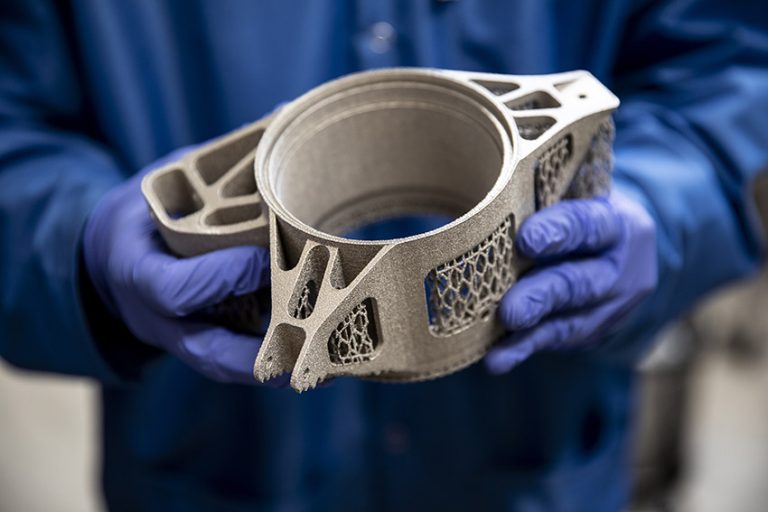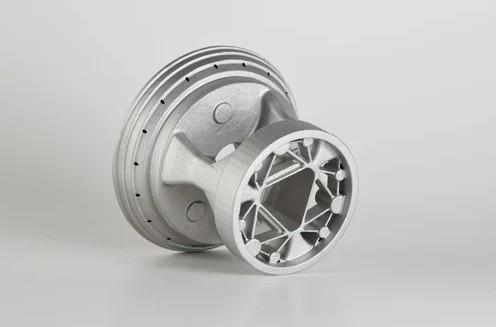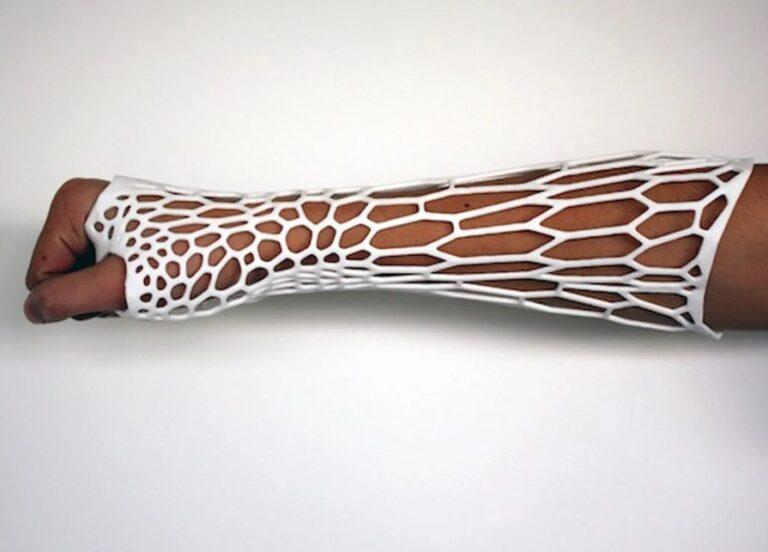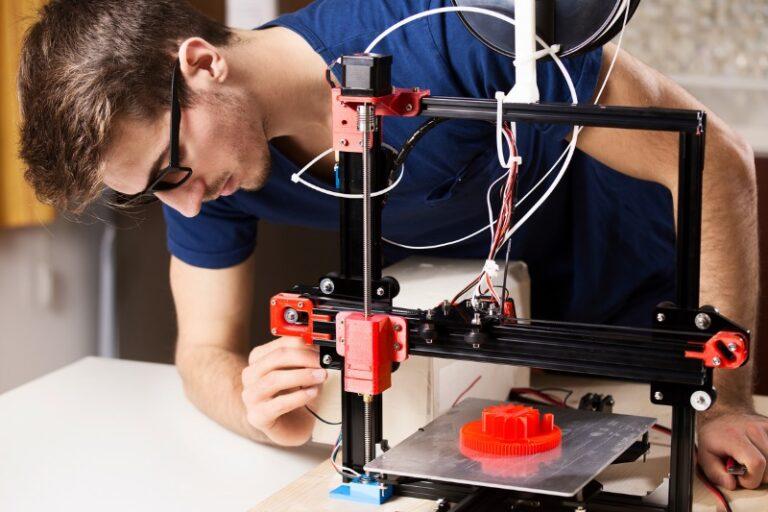Clear 3D Printer Filament: Revolutionizing Transparent Printing
Introduction
Clear 3D printer filament has emerged as a game changer in the world of additive manufacturing. This innovative material allows users to create stunning transparent objects with ease. As 3D printing technology continues to evolve, material advancements play a crucial role in expanding its potential. The development of transparent filaments has opened new doors for a variety of applications in diverse industries. This blog post will delve into the characteristics, benefits, and applications of clear filaments, demonstrating how they have revolutionized transparent printing and are shaping the future of 3D printing technology.
Brief overview of 3D printing technology
The process of making things has changed because of additive manufacturing, often known as 3D printing. Using a variety of materials, including ceramics, metals, and polymers, this technology constructs items layer by layer. With its distinctive qualities and appealing appearance, clear 3D printer filament has gained popularity. As 3D printing gets traction, it continues to have an impact on sectors like aerospace, automotive, healthcare, and fashion. The availability of clear filament has expanded the range of conceivable uses by allowing the production of translucent and eye-catching models, prototypes, and goods that were previously challenging or impractical.
Importance of material innovation in 3D printing
Material innovation plays a vital role in expanding the capabilities and applications of 3D printing. By developing new materials with diverse properties, manufacturers can cater to specific needs across various industries. These innovations enable the production of stronger, lighter, and more flexible components, resulting in improved functionality and performance. Furthermore, material advancements can lead to more sustainable and eco-friendly printing options, promoting responsible manufacturing. As the 3D printing market continues to grow, the ongoing development of novel materials will be crucial in driving adoption, fostering new applications, and pushing the boundaries of what additive manufacturing can achieve.
Introduction to clear 3D printer filament and its impact on transparent printing
Clear 3D printer filament is a groundbreaking development that has significantly impacted transparent printing. These filaments allow for the production of clear or translucent objects, providing unique aesthetic and functional properties. The ability to print transparent parts has introduced new possibilities in various fields, including architecture, electronics, and design. By overcoming the limitations of traditional manufacturing methods, clear filaments have facilitated the creation of intricate and complex transparent models. As the demand for transparency in 3D printing grows, clear filament continues to revolutionize the industry, offering innovative solutions and inspiring further material advancements.
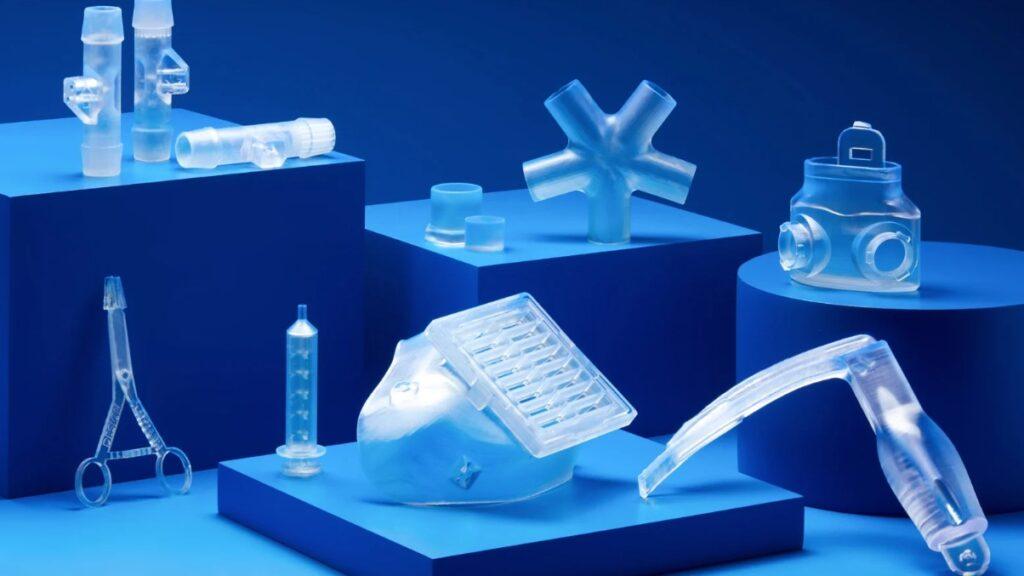
Characteristics of Clear 3D Printer Filament
Firstly, clear filaments are available in various materials, each offering unique properties. Consequently, users can select the most suitable type for their specific application. Moreover, these filaments exhibit excellent transparency, allowing light to pass through the printed objects effortlessly. Additionally, they provide an appealing aesthetic quality, especially when used for art installations or prototypes. Furthermore, clear filaments offer enhanced durability compared to their opaque counterparts, making them ideal for creating robust, long-lasting items. Ultimately, the characteristics of clear filaments have broadened the possibilities in 3D printing, enabling innovative and functional transparent designs.
Material composition and types
First off, polycarbonate (PC) is a popular material due to its excellent strength and heat resistance. It also has outstanding optical clarity, making it appropriate for demanding applications. Second, acrylonitrile butadiene styrene (ABS) is renowned for its resilience to impact, though post-processing may be necessary for maximum transparency. Moreover, polyethylene terephthalate glycol (PETG), which combines the strength of ABS with the simplicity of PLA, is becoming a more and more popular choice. Last but not least, polypropylene (PP) offers flexibility and chemical resistance, albeit printing may be more difficult due to its low melting point and propensity to warp.
Polycarbonate (PC)
Initially, polycarbonate (PC) is known for its exceptional strength and impact resistance. As a result, it is widely used in industries like automotive and aerospace. Moreover, its high heat resistance allows for the creation of objects that can withstand extreme temperatures. In addition, PC offers excellent optical clarity, making it ideal for transparent printing applications. Furthermore, it exhibits good dimensional stability, ensuring precise and accurate prints. However, PC may require a high-temperature printing environment, as well as a heated build platform to prevent warping. Despite these challenges, PC remains a popular choice for producing strong and transparent 3D printed objects.
Acrylonitrile Butadiene Styrene (ABS)
Firstly, acrylonitrile butadiene styrene (ABS) is a widely used material in the 3D printing industry. Notably, it offers good strength, durability, and impact resistance. Additionally, clear ABS can be used for transparent printing applications, although it may require post-processing to achieve optimal clarity. Furthermore, ABS is relatively easy to print, as it adheres well to most build surfaces. However, it can emit fumes during the printing process, making proper ventilation necessary. Despite this drawback, ABS remains a popular choice for many applications due to its balance of strength, flexibility, and cost-effectiveness.
Polyethylene Terephthalate Glycol (PETG)
At first, polyethylene terephthalate glycol (PETG) gained recognition as a top 3D printing material. Particularly, it combines the usability of PLA with the strength and durability of ABS. Clear PETG is a great option for many transparent printing applications because of its outstanding transparency. Moreover, PETG is renowned for its superior layer adhesion and resistance to warping, producing prints that are dependable and consistent. It is also resistant to moisture and chemicals, making it appropriate for a variety of uses. As a result, PETG has emerged as a popular material among 3D printing enthusiasts looking for high-quality transparent prints.
Polypropylene (PP)
Initially, polypropylene (PP) is a versatile thermoplastic known for its unique properties. Notably, it offers excellent flexibility, chemical resistance, and low density. Furthermore, PP has low moisture absorption, making it suitable for various outdoor applications. However, printing with PP can be challenging due to its low melting point and propensity for warping. Consequently, users often require specialized build surfaces and a controlled printing environment. Additionally, achieving optimal transparency with PP may necessitate post-processing techniques. Despite these challenges, PP remains an attractive option for those seeking a flexible and chemically resistant material for transparent printing applications.
filaments comparison
| Material | Strength | Durability | Heat Resistance | Flexibility | Chemical Resistance | Transparency | Ease of Printing | Post-Processing |
|---|---|---|---|---|---|---|---|---|
| Polycarbonate (PC) | High | High | High | Low | Moderate | Excellent | Moderate | Minimal |
| Acrylonitrile Butadiene Styrene (ABS) | Moderate | High | Moderate | Moderate | Moderate | Good | Moderate | Required |
| Polyethylene Terephthalate Glycol (PETG) | Moderate | High | Moderate | Moderate | High | Excellent | Easy | Minimal |
| Polypropylene (PP) | Low | Moderate | Low | High | High | Good | Difficult | Required |
Please note that this table provides a general overview of the properties of each clear filament material. However, specific properties can vary depending on the manufacturer and formulation of the filament.
Benefits of using clear filament
Firstly, clear filaments offer a unique aesthetic appeal, enabling the creation of visually striking transparent or translucent objects. Moreover, their ability to transmit light makes them ideal for applications like light fixtures and diffusers. Furthermore, clear filaments are often more durable than their opaque counterparts, providing additional strength and longevity to printed objects. Additionally, they open new possibilities in various fields, including architecture, electronics, and design. Consequently, these benefits have contributed to a growing interest in transparent printing, with clear filaments playing a crucial role in expanding the capabilities and potential of additive manufacturing.
Aesthetic appeal
Initially, the aesthetic appeal of clear filaments is undeniable, as they enable the creation of intricate, visually striking designs. Furthermore, their transparency can enhance the appearance of objects by showcasing internal structures or creating unique light effects. Moreover, clear filaments allow for the production of glass-like objects, which can elevate the overall look and feel of a project. Additionally, their versatility enables a range of artistic expressions, from subtle and elegant to bold and impactful. Consequently, the aesthetic appeal of clear filaments has captured the interest of artists, designers, and engineers alike, leading to innovative applications in various fields.
Improved light transmission
Firstly, clear filaments offer excellent light transmission properties, which can be leveraged for numerous applications. Moreover, this feature enables the creation of unique light fixtures, diffusers, or even optical components. Furthermore, the light transmission properties can also enhance the appearance of objects by creating interesting light effects, reflections, or refractions. Additionally, improved light transmission can be utilized for functional purposes, such as illuminating electronic enclosures or providing visibility into fluid containers. Consequently, the ability to transmit light effectively has broadened the scope of applications for 3D printing, allowing designers and engineers to explore new creative possibilities.
Enhanced durability
Enhanced durability is one of the key benefits of clear filaments, as they often exhibit increased strength compared to opaque materials. Moreover, this attribute makes them suitable for creating objects that require long-lasting performance and resistance to wear and tear. Furthermore, their durability can be especially beneficial in industries like automotive, aerospace, and consumer products, where components are subject to rigorous use. Additionally, the combination of strength and transparency offers new opportunities for applications where both aesthetic and functional properties are important. Consequently, the enhanced durability of clear filaments has contributed to their growing popularity in various sectors.
Applications of Clear 3D Printer Filament
The applications of clear filaments are numerous and diverse, spanning multiple industries. Firstly, they are widely used in the lighting industry for creating light fixtures, lampshades, or diffusers. Moreover, they are utilized in the medical field for creating transparent models of anatomical structures or prosthetics. Furthermore, they have applications in architecture for producing clear models of building designs. Additionally, they are useful in the electronics industry for creating enclosures or cases that require transparency. Moreover, clear filaments are commonly used in the automotive and aerospace industries for producing prototypes, components, and parts that require strength, durability, and transparency. Consequently, the versatility of clear filaments has enabled new and exciting applications in various fields.
Architectural models and prototypes
Architectural models and prototypes are one of the most significant applications of clear filaments. They allow architects and designers to create accurate and intricate models that showcase the design’s transparency and interior details. For instance, the Burj Khalifa Tower in Dubai was designed and prototyped using transparent acrylic models to ensure its structural stability and aesthetic appeal. Moreover, clear filaments have enabled the creation of complex geometries and fluid shapes that were previously challenging to achieve with traditional methods. Additionally, clear filament models can help clients visualize their projects better, providing a more realistic representation of the final product. Consequently, the use of clear filaments has become increasingly popular in architectural design, enabling better communication, visualization, and accuracy in the building process.
Transparent enclosures for electronics
Transparent enclosures for electronics is another significant application of clear filaments. They provide a practical solution for protecting electronic components while allowing easy inspection and visibility of internal parts. For example, the Raspberry Pi Foundation, a nonprofit organization that produces credit card-sized computers, offers transparent cases that enable users to see the board and its components. Additionally, transparent enclosures can be used in manufacturing to monitor the status of machines, robots, or conveyor systems. Furthermore, they can also be utilized in laboratories and scientific research, where clear visibility of samples or experiments is crucial. Consequently, the use of clear filaments for transparent enclosures has provided a cost-effective and versatile option for various industries.
Light fixtures and diffusers
Light fixtures and diffusers are another application of clear filaments, allowing for the creation of unique and aesthetically pleasing lighting designs. For instance, the Japanese design company Nendo has developed a series of clear acrylic lamps that utilize 3D printing technology to create intricate and visually striking shapes. Moreover, the use of clear filaments can provide effective light diffusion while maintaining transparency, resulting in a softer and more diffused light effect. Additionally, clear filament light fixtures can be utilized in architectural or interior design projects, where the balance of functionality and visual appeal is crucial. Consequently, clear filaments have opened up new possibilities in lighting design, enabling designers to create novel and artistic lighting solutions.
Medical devices and models
Clear filaments have also found applications in medical devices and models, where their transparency can provide unique advantages. For instance, the University of Michigan has developed a 3D-printed transparent skull implant that can help neurosurgeons better visualize the surgical area during procedures. Moreover, clear filaments can be used to produce custom surgical tools, implants, or prosthetics that match the patient’s anatomy precisely. Additionally, they can be utilized for creating realistic anatomical models for medical education or surgical planning. Furthermore, clear filament models can help visualize complex medical conditions, aiding in diagnosis and treatment planning. Consequently, the use of clear filaments has provided a new avenue for innovation and precision in the medical field.
Art and design projects
Art and design projects are another area where clear filaments have been utilized, offering unique creative possibilities. For example, the Dutch design studio Joris Laarman Lab has developed a series of transparent furniture pieces that utilize 3D printing technology. Furthermore, clear filaments can be used to create intricate and visually appealing sculptures, jewelry, or other decorative objects. Additionally, the use of clear filaments can enable artists and designers to incorporate transparency and light effects into their projects, creating unique visual experiences. Moreover, clear filament art projects can be used for exhibitions or installations, where the play of light and shadow can enhance the overall impact. Consequently, clear filaments have opened up new avenues for artistic expression and experimentation.
Educational tools and visual aids
Clear filaments are also valuable in educational tools and visual aids, where they can be utilized to create hands-on learning experiences. For example, teachers can use 3D printed models made of clear filament to demonstrate complex scientific concepts such as the human body, plant structures, or molecular structures. Furthermore, the use of clear filaments can enhance the visual appeal of educational models, making them more engaging and interesting to students. Additionally, clear filament models can be utilized for interactive exhibits in museums, science centers, or other educational settings, allowing visitors to explore concepts in a tactile and immersive way. Consequently, the use of clear filaments has opened up new possibilities for educational tools and visual aids.
Tips for Successful Transparent Printing with Clear Filament
Successful transparent printing with clear filament requires attention to detail and some specific considerations. Firstly, ensuring the build plate is level and clean is crucial to achieve a smooth surface finish. Additionally, using a low nozzle temperature and slow print speeds can prevent bubbles and improve adhesion. Furthermore, choosing the right type of clear filament for the application and using a high-quality filament can result in more consistent and reliable prints. Moreover, utilizing support structures can prevent warping and provide better accuracy for intricate designs. Additionally, post-processing techniques such as sanding or polishing can enhance the transparency and surface quality of the print. Consequently, paying attention to these factors can result in successful transparent printing with clear filament.
Printer settings and calibration
Correct printer settings and calibration are essential for achieving high-quality prints with clear filaments. Firstly, adjusting the printer’s temperature and speed settings can prevent issues such as stringing or blobs that can affect the surface finish. Additionally, calibrating the printer’s extruder and bed can ensure that the filament is deposited accurately, preventing under- or over-extrusion. Furthermore, using a nozzle size appropriate for the desired level of detail can enhance the accuracy of the print. Moreover, regularly cleaning the printer and performing maintenance checks can prevent issues and ensure consistent print quality. Consequently, paying attention to printer settings and calibration can result in better and more reliable prints with clear filaments.
Layer thickness and print orientation
Layer thickness and print orientation can significantly impact the quality and transparency of prints made with clear filaments. Firstly, choosing a layer thickness appropriate for the printer’s capabilities and the desired level of detail can improve the accuracy of the print. Additionally, choosing the right print orientation can prevent issues such as overhangs or support structures that can affect the transparency of the print. Furthermore, printing in a direction that maximizes the light transmission through the print can result in a more aesthetically pleasing and functional final product. Moreover, utilizing infill settings that balance strength and transparency can result in a more durable and usable print. Consequently, paying attention to layer thickness and print orientation can significantly enhance the quality of prints made with clear filaments.
Post-processing techniques
Post-processing techniques can enhance the transparency and surface quality of prints made with clear filaments. Firstly, sanding the surface of the print with increasingly fine-grit sandpaper can smooth out imperfections and scratches, resulting in a more polished finish. Additionally, using a polishing compound or spray can improve the transparency and shine of the print. Furthermore, using a clear coat or UV-resistant spray can protect the print from damage and fading over time. Moreover, utilizing techniques such as dyeing or painting can add color and visual interest to the print while still maintaining its transparency. Consequently, post-processing techniques can provide additional options for enhancing the appearance and functionality of prints made with clear filaments.
Sanding and polishing
Sanding and polishing are common post-processing techniques used to enhance the surface finish and transparency of prints made with clear filaments. Firstly, using sandpaper with increasingly fine grits can remove layer lines and imperfections, resulting in a smoother surface. Additionally, using a polishing compound or spray can improve the clarity and shine of the print. Furthermore, utilizing a buffing wheel or cloth can provide an even higher level of shine and clarity. Moreover, paying attention to the direction of sanding and polishing can ensure a uniform finish. Consequently, sanding and polishing can significantly enhance the appearance and quality of prints made with clear filaments.
Coating and sealing
Coating and sealing are post-processing techniques used to protect and enhance the transparency of prints made with clear filaments. Firstly, using a clear coat or spray can add a layer of protection against scratches and other damage. Additionally, using a UV-resistant spray can prevent fading and yellowing over time. Furthermore, applying a sealant can provide a water-resistant barrier for prints intended for outdoor use. Moreover, using a dip coating or immersion technique can provide an even and consistent layer of coating. Consequently, coating and sealing can provide additional options for enhancing the durability and appearance of prints made with clear filaments.
Vapor smoothing
Vapor smoothing is a post-processing technique used to improve the surface finish and transparency of prints made with clear filaments. Firstly, the print is placed in a chamber with a solvent such as acetone or Methyl ethyl ketone(MEK). The solvent vaporizes and dissolves the outer layer of the print, smoothing out layer lines and imperfections. Additionally, this technique can improve the transparency of the print by removing the rough outer layer. Furthermore, the print can be left in the chamber for varying lengths of time depending on the desired level of smoothing. Consequently, vapor smoothing can provide a quick and effective way to enhance the appearance and quality of prints made with clear filaments.
Troubleshooting common issues
While printing with clear filament, there are several common issues that may arise. Firstly, bubbles and voids may appear in the print, which can be caused by moisture in the filament or inadequate drying time. Additionally, warping and cracking may occur due to temperature fluctuations or incorrect bed leveling. Furthermore, layer separation and stringing can result from improper retraction settings or filament flow. Moreover, inconsistent transparency and surface finish can be caused by improper printing settings or post-processing techniques. Consequently, troubleshooting these issues may require adjusting printer settings, utilizing different post-processing techniques, or using different filament types. Understanding and addressing these common issues can help ensure successful and high-quality prints with clear filament.
Adhesion problems
Adhesion problems can occur when printing with clear filament, resulting in failed prints or poor quality. Firstly, poor bed adhesion can lead to the print shifting or lifting during printing, causing warping or even detachment from the bed. Additionally, filament adhesion issues can cause under-extrusion or clogging of the nozzle, resulting in incomplete or low-quality prints. Furthermore, temperature fluctuations and humidity can affect the adhesive properties of the filament, causing it to become less sticky or even brittle. Consequently, addressing adhesion issues may require adjusting printer settings, using a different print bed surface or adhesive, or pre-treating the filament with a drying process.
Inconsistent transparency
Inconsistent transparency is a common issue when printing with clear filament. This can be caused by a variety of factors, including improper print settings or post-processing techniques. Firstly, incorrect print temperature can cause the filament to partially melt, leading to a cloudy or opaque appearance. Additionally, over-extrusion or under-extrusion can cause uneven thickness and result in inconsistent transparency. Furthermore, improper post-processing techniques, such as insufficient sanding or polishing, can lead to a non-uniform surface finish, affecting the filament’s transparency. Consequently, addressing this issue may require adjusting printer settings or utilizing different post-processing techniques to ensure a consistent and transparent finish.
Layer separation
Layer separation, also known as delamination, can occur when printing with clear filament, resulting in a weakened structure and poor print quality. This issue can be caused by improper layer adhesion, resulting in layers not bonding together properly. This can be caused by incorrect print temperature, print speed, or even filament moisture content. Additionally, insufficient cooling time between layers can cause warping or curling, leading to layer separation. Therefore, addressing layer separation requires proper printer calibration, ensuring sufficient cooling time between layers, and proper filament storage to maintain appropriate moisture levels.
Future Developments and Potential of Clear 3D Printer Filament
The use of clear filament will only increase as 3D printing technology develops. Clear filament offers many potential uses in a range of industries, including architecture, medicine, and the arts, thanks to its capacity to generate high-quality, transparent prints. New transparent filament types with improved qualities, such as greater strength or flexibility, as well as advancements in the manufacturing process to boost productivity and cut costs, could all be part of future innovations. Moreover, improvements in hardware and software might make it possible to print with clear filament even more precisely and intricately. The 3D printing industry is anticipating exciting new developments in transparent filament due to its nearly infinite applications.
Advancements in material science
To enhance the functionality and potential of 3D printing filaments, material scientists are continually investigating and experimenting with novel polymers, additives, and manufacturing methods. Improved transparency, strength, flexibility, and other desirable features for 3D printing filaments have resulted from advances in material science. For instance, recent advancements have produced filaments with increased heat resistance, making them appropriate for use in high-temperature applications. Moreover, cutting-edge manufacturing processes like extrusion-based additive manufacturing (EAM) have made it possible to produce filaments with precise dimensions and consistent qualities, resulting in improved print quality. It is expected that even more sophisticated and adaptable filaments will become accessible as material science develops, providing new opportunities for 3D printing.
New applications in various industries
Clear 3D printer filament is a flexible material that could be used in many different sectors. More applications for transparent printing are opening up as material science develops, including the creation of medical devices, aircraft, and automobiles. Clear filament has the potential to improve the effectiveness, durability, and aesthetic appeal of products in several industries thanks to its special qualities. It will be interesting to see how this technology develops and how it will influence the future of manufacturing as other businesses investigate the potential of clear filament.
The role of clear filament in sustainable and eco-friendly 3D printing
Clear filament offers an eco-friendly alternative to traditional opaque filaments. As transparency reduces the amount of dye and pigment required to create the filament, it reduces the environmental impact of the 3D printing process. Additionally, the ability to print clear parts means that less material is wasted in testing and prototyping. Clear filament also offers a more sustainable option in the production of transparent parts, which are frequently made from petroleum-based plastics that take centuries to break down in landfills. Using clear filament can help promote sustainable 3D printing practices while maintaining the quality and appearance of the final product.
Conclusion
Due to its distinctive properties and several advantages, clear 3D printer filament is a cutting-edge material that has grown in popularity in recent years. From better aesthetic appeal to increased durability, this filament offers many benefits, making it a favored option in a variety of industries, including architecture, electronics, art, and education. Clear filament printing can present its own set of difficulties, but with the right printer settings, post-processing methods, and troubleshooting approaches, effective printing outcomes can be achieved. Clear filament printing is expected to play an important role in the future of 3D printing due to developments in material science and novel applications in numerous industries.
Recap of the impact of clear 3D printer filament on transparent printing
In conclusion, clear 3D printer filament offers a range of benefits and applications for various industries. Its aesthetic appeal, improved light transmission, and enhanced durability make it an ideal choice for many projects, including architectural models and prototypes, medical devices, and art and design projects. To successfully print with clear filament, it is important to consider factors such as printer settings, layer thickness, and post-processing techniques like sanding and polishing. As advancements in material science continue, we can expect to see even more opportunities for clear filament in sustainable and eco-friendly 3D printing. Overall, clear filament has made a significant impact on transparent printing and its versatility makes it a valuable tool for many industries.
Encouragement for continued exploration and innovation in the field
As clear filament becomes more popular, it’s important to continue exploring and innovating in the field. The benefits of clear filament are significant, including enhanced aesthetics, improved light transmission, and increased durability. Additionally, it has a wide range of applications in industries such as architecture, medicine, and art. However, there are still some challenges to overcome, such as inconsistent transparency and layer separation. By continuing to research and develop new materials and techniques, we can improve the quality and reliability of clear filament printing, and expand its potential for future use.
How to choose the right clear filament for your project?
By following these steps, you can choose the right clear filament for your project and achieve the desired results.
- Determine the requirements of your project
Consider factors such as strength, flexibility, heat resistance, and transparency.
- Understand the types of clear filaments available
Research the different types of clear filaments available, including their properties and recommended applications.
- Consider the printing process
Determine the type of 3D printer you have and its compatibility with various clear filaments.
- Check for certifications
Look for clear filaments that meet industry standards, such as FDA or UL certifications, if applicable to your project.
- Read reviews and ratings
Check reviews and ratings from other users who have used clear filaments for similar projects to get an idea of their experiences.
- Experiment and test
Purchase a few samples of clear filaments that meet your requirements and test them on your 3D printer to determine the best fit for your project.
- Choose a reputable supplier
Choose a reputable supplier who provides high-quality and consistent clear filaments for reliable printing results.
FAQs
The clear filament is made with materials that allow for transparency and light transmission, providing unique aesthetic and functional properties.
Yes, as long as your 3D printer is compatible with the type of clear filament you want to use.
Clear filament can be more expensive than some other types of filaments due to the materials and manufacturing process required to create transparency.
Yes, you can paint or dye clear filament, but it may affect its transparency and light transmission properties.
Proper printer calibration, choosing the right settings, and using post-processing techniques like sanding and polishing can help ensure successful printing with clear filament.
Adhesion problems, inconsistent transparency, and layer separation can be common issues when printing with clear filament.
Yes, some types of clear filament can be recycled, but it depends on the specific materials used in the filament.

